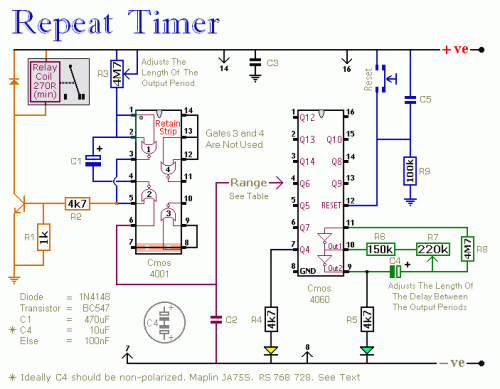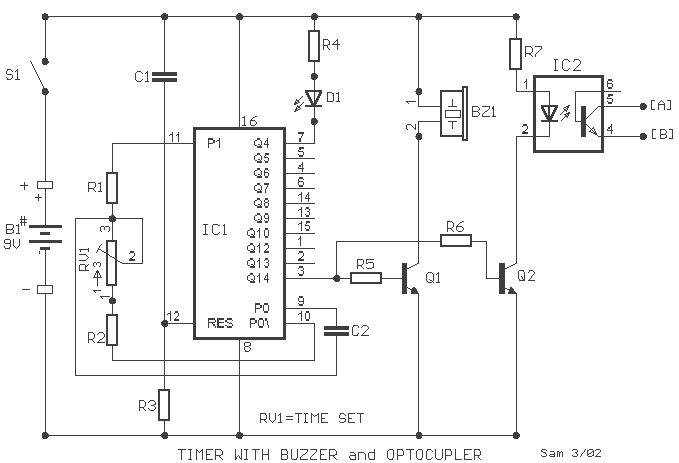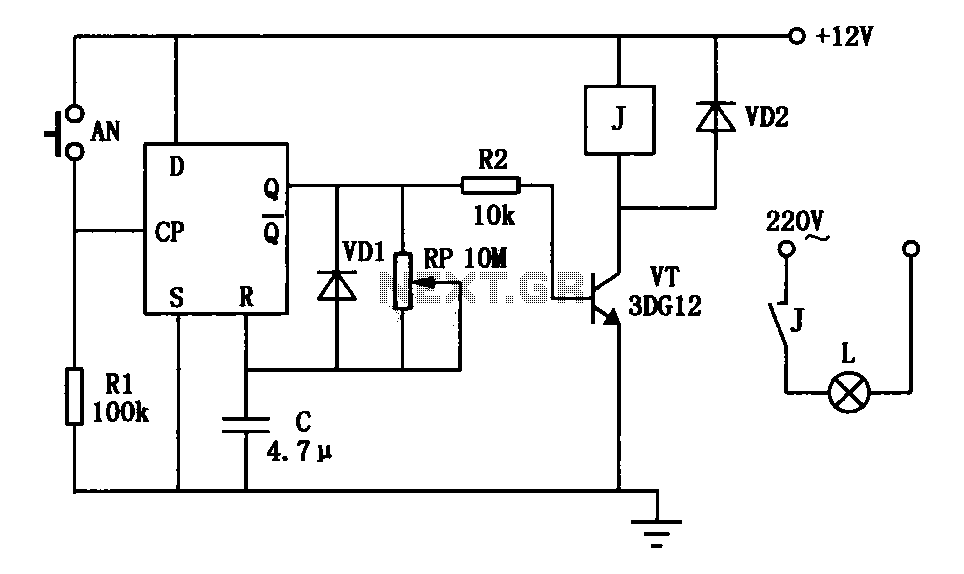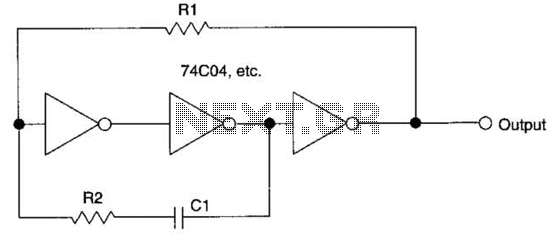
CMOS 4060 IC For Repeating Interval Timer

The following circuit illustrates a repeating interval timer circuit diagram utilizing the CMOS 4060 integrated circuit (IC). Features include its foundation on the CMOS 4060 IC and a 14-bit binary counter.
The CMOS 4060 IC is a versatile component widely used in timer and oscillator applications due to its high noise immunity and low power consumption. This integrated circuit includes a 14-stage binary ripple counter and an oscillator, which can be configured to generate a variety of timing intervals. The circuit can be designed to produce a stable output frequency by adjusting external components such as resistors and capacitors connected to the timing pins.
In a typical configuration of the repeating interval timer, the CMOS 4060 is connected to an external resistor-capacitor (RC) network. The values of these components determine the frequency of oscillation. The output from the oscillator feeds into the binary counter, which counts the pulses and can be configured to reset after a predetermined count, effectively creating a repeating timer function. The output can be taken from various stages of the counter, allowing for different timing intervals to be achieved depending on the specific application requirements.
To enhance functionality, additional components such as diodes and transistors may be included to drive higher loads or to interface with other logic levels. The circuit can be powered by a standard DC supply, making it suitable for battery-operated devices. Overall, the CMOS 4060-based repeating interval timer circuit is a reliable solution for applications requiring precise timing control.The following circuit shows about CMOS 4060 IC For Repeating Interval Timer Circuit Diagram. Features: Based On The CMOS 4060 IC, 14-bit binary .. 🔗 External reference
The CMOS 4060 IC is a versatile component widely used in timer and oscillator applications due to its high noise immunity and low power consumption. This integrated circuit includes a 14-stage binary ripple counter and an oscillator, which can be configured to generate a variety of timing intervals. The circuit can be designed to produce a stable output frequency by adjusting external components such as resistors and capacitors connected to the timing pins.
In a typical configuration of the repeating interval timer, the CMOS 4060 is connected to an external resistor-capacitor (RC) network. The values of these components determine the frequency of oscillation. The output from the oscillator feeds into the binary counter, which counts the pulses and can be configured to reset after a predetermined count, effectively creating a repeating timer function. The output can be taken from various stages of the counter, allowing for different timing intervals to be achieved depending on the specific application requirements.
To enhance functionality, additional components such as diodes and transistors may be included to drive higher loads or to interface with other logic levels. The circuit can be powered by a standard DC supply, making it suitable for battery-operated devices. Overall, the CMOS 4060-based repeating interval timer circuit is a reliable solution for applications requiring precise timing control.The following circuit shows about CMOS 4060 IC For Repeating Interval Timer Circuit Diagram. Features: Based On The CMOS 4060 IC, 14-bit binary .. 🔗 External reference





